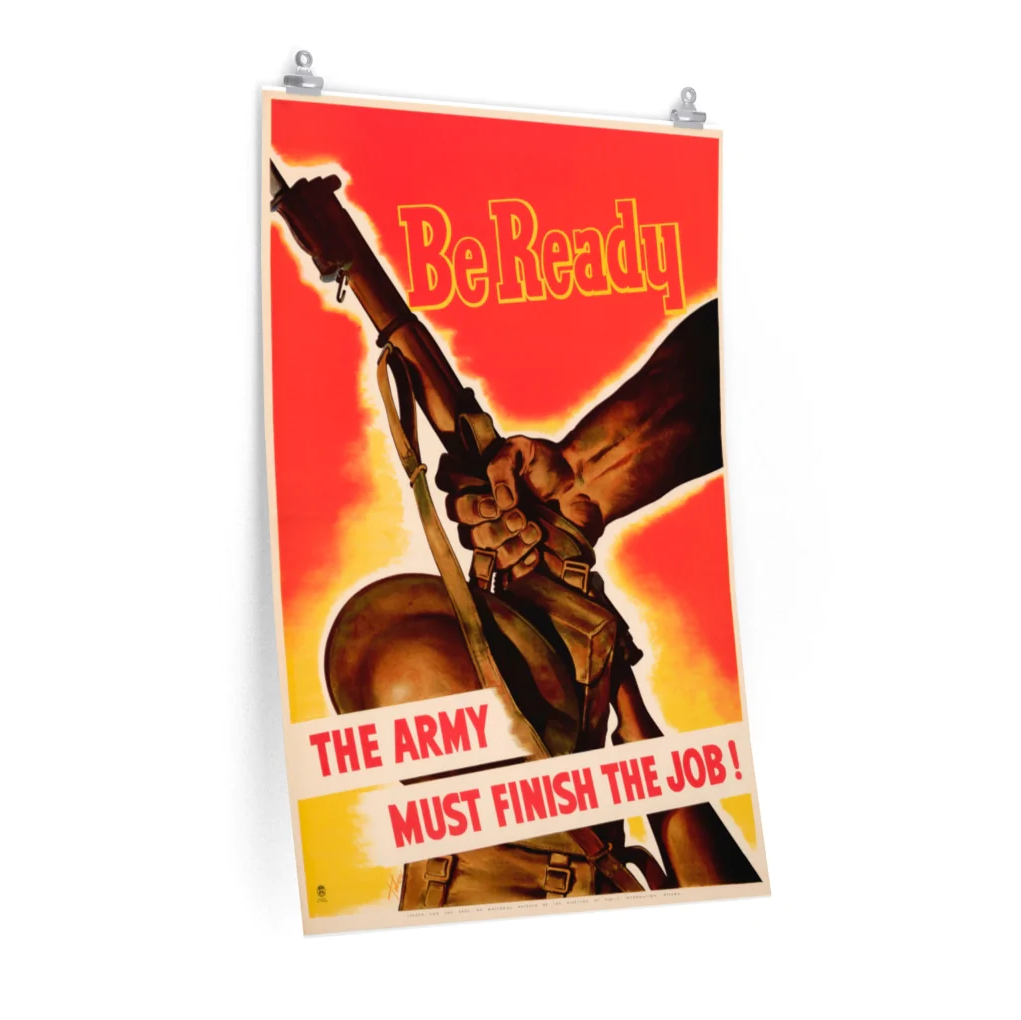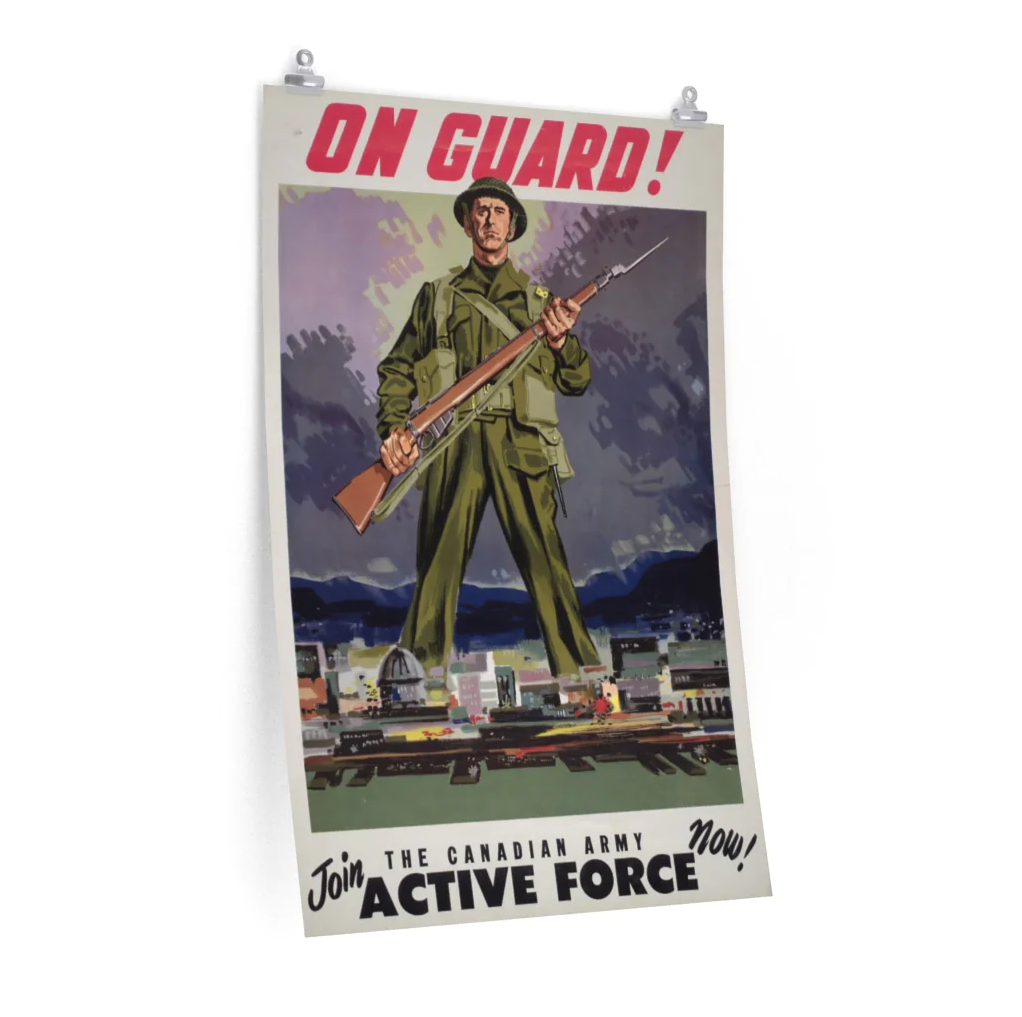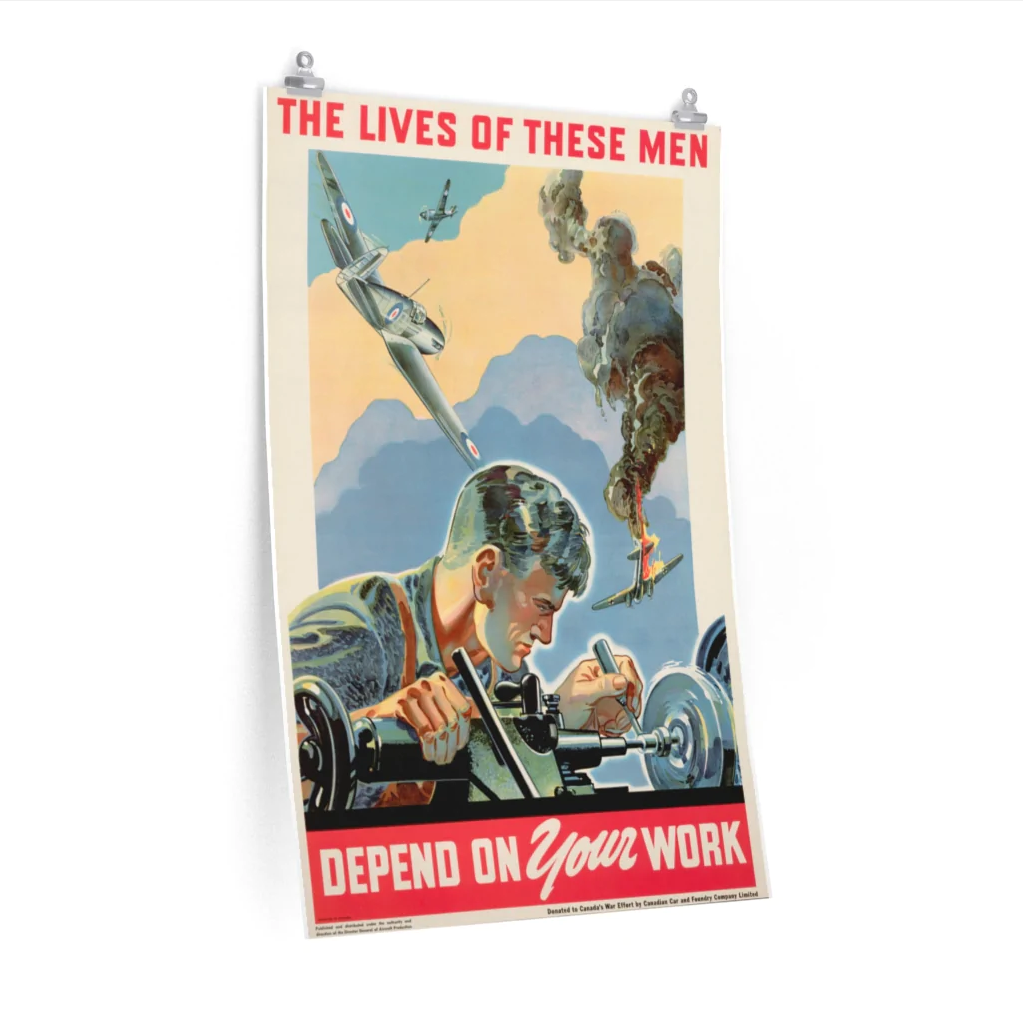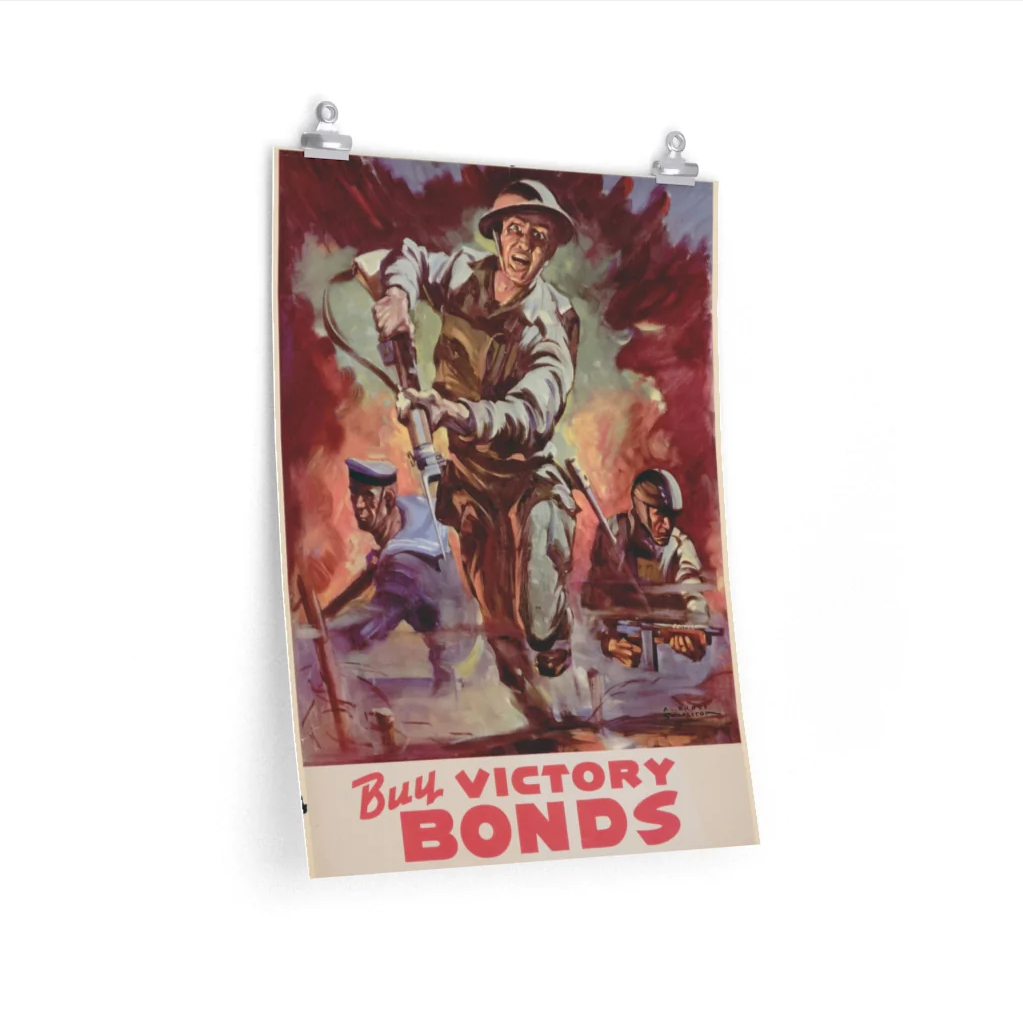War Production
Upon the outbreak of the Second World War, Canadian industrial manufacturing was not geared toward the production of military equipment. Canada’s economy was also reeling from the effects of the Great Depression and had not yet recovered. The outbreak of war in September 1939 began a process that forever changed the Canadian economy and manufacturing. It took an extended period to convert Canadian manufacturing to a war footing, not reaching its peak until 1944, but once this happened Canadian war production greatly contributed to Allied victory in the war.
Department of Munitions and Supply
To organize Canadian war production, Parliament created the War Supply Board in September 1939. It was restricted on purpose with the concept of limited liability, the name later given to the Canadian government policy of limiting Canadian involvement in combat, still controlling Canadian conduct in the war. Weapons and equipment were slow in coming.
On the 9th of April 1940, coincidentally the day the Germans invaded Denmark and Norway, the Department of Munitions and Supply replaced the War Supply Board. The new department essentially controlled, directly or indirectly, all matters of war supply in Canada. It also coordinated all purchases made by British and other Allied governments in Canada. Shortly after this change, the German conquest of France and the Low Countries created further pressure to increase Canadian war production.
C.D. Howe, during memorial service for General James Wolfe, 1 January 1941
The Department of Munitions and Supply was headed by C.D. Howe, an American trained engineer, former business owner, and Member of Parliament. Due to this position, along with other appointments he held, Howe became known as the “the minister of everything.”
On the 7th of August 1940, Howe was given the power to incorporate companies and to delegate to them any of his own legal powers and duties. Twenty Crown companies were created and worked under the department. The creation of these corporations avoided a large government bureaucracy, giving the Canadian war production much needed flexibility. The companies performed task such as manufacturing, purchasing and distributing materials, and supply regulation.
From coast to coast factories were built to supply Canada and Britain
Trucks, tanks and guns
Over the course of the war, Canadian industry produced more than 800,000 military transport vehicles. 168,000 were issued to the Canadian military, while the rest went to allies, including Britain, the United States, and the Soviet Union. Tanks were also produced in Canada before the Allies decided to produce all Sherman tanks in the United States. As an example of Canadian tank production, the Canadian Pacific Railway constructed 788 Valentine tanks in Montreal. Some were shipped to Britain and the Soviet Union.
Canada also produced thousands of artillery pieces including field guns, anti-aircraft guns, and anti-tank guns. Millions of small arms such rifles and machine guns, ammunition rounds, and the various other equipment and material needed to fight the war were made in Canada.
Naval Production
Some 57,000 individuals were employed in Canadian merchant ship building which produced nearly 350 ten thousand-ton ships during the war. A further 27,000 worked in naval shipbuilding, manufacturing destroyers, frigates, corvettes, and minesweepers. Ship building took place on both coasts as well as in the Great Lakes.
Aviation Production
The Canadian aircraft industry went from extremely low levels of production before the conflict to thousands of aircraft assembled a year by the end of the Second World War. The industry also produced parts and air frames. At its peak, the industry employed 120,000 men and women. Canadian factory space for aircraft production dramatically increased from 500,000 square feet before the war to a high of 14,000,000 square feet.
By the end of the war, Canada had assembled more then 16,000 aircraft, a far cry from what the country could have produced in the prewar era. The aircraft assembled included, but were not limited to, Lancaster bombers, Hurricane fighters, Mosquito fighter bombers, Catalina flying boats, and Harvard and Cornell trainers. These supplied the Royal Canadian Air Force and Royal Air Force.
Resource Production
Although the country was largely agricultural at the time, it had a well-developed mining and forestry sector, and these industries were vital to the war effort. One of Canada’s most vital contributions was Aluminum from Arvida, Quebec, the largest aluminum producing unit in the world. Canada produced 40% of all the Allied production of Aluminum which was a vital metal for aircraft production. Canada also supplied uranium to the United States for use in the Manhattan Project, as well as lumber and steel for war production. In total, Canadian resource production played a significant role in the Allied victory, and the country's economy boomed as a result.
Working on the home front
Out of Canada's population of 11.3 million, approximately one million people worked in essential war industries during the war. Another two million worked full-time in essential civilian industries, such as agriculture, communications, and food processing. Thousands of women also worked in war production, just like during the First World War. Some childcare was provided by the Canadian federal and provincial governments, but it only went so far as the burden of childcare often fell on family members.
Wages, job postings, and employee job changes were all highly regulated by the Canadian government. War production benefited Canadian workers as the average yearly wage increased dramatically during the war, rising from $956 in 1938 to $1525 in 1943. There was as much overtime as people wanted, and many worked fifty or even sixty hours a week. Wartime Canadians ate better and spent more, despite food rationing and inflation controls, than they had in the 1930s.
Canada’s war production played an important role in the air, on the sea, and on the ground on all fronts across the world in the Second World War. Historian Tim Cook observed that “By the end of the war, Canada had produced millions of shells, thousands of airplanes, hundreds of warships, and hundreds of thousands of trucks—more than Germany, Italy, and Japan combined—for the Allied nations at war.” Canada was fourth in terms of wartime production behind the United States, the United Kingdom, and the Soviet Union. Canadian war production took time to develop but once it did its role in Allied victory is undeniable.
Support the project:
How can you support the project:
Buy a poster today!
We sell many authentic posters from the Second World War.These are high resolution scans of original posters that you can only find in the archives.
Each poster is printed on high quality paper ready for mounting in a frame for your office or living room.
The best part of buying a poster? 100% of proceeds are directed back to the project allowing us to continue to map out the Second World War.




Other ways to support the project:
Donate
You can help us tell the story of Canadian soldiers by donating today!
Our team is dedicated to keeping the story of Canada in the Second World War at the forefront using interactive technology that makes history open and accessible.
With your donation you help us to keep mapping and digitizing war diaries so we can continue to tell the story of those who served and those who fell.
Join Patreon
Do you want to become part of the team? Consider joining Patreon!
As a member of Patreon you can influence our project, what we are working on, and can even direct message our team. As a Patreon you can even get discounts to our entire store!
With your membership you can show your commitment to the project by helping us every month. And the best part is, every Patreon dollar goes directly to the web map!






















